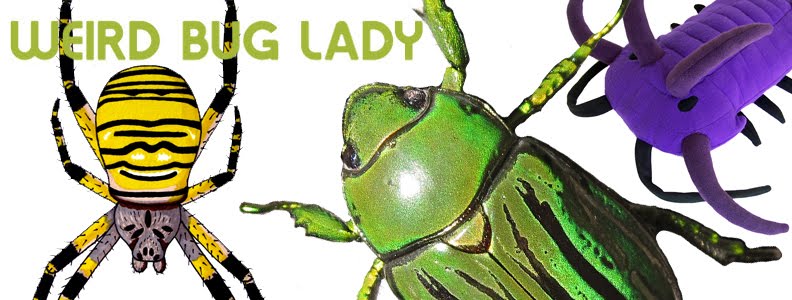 One of my favorite insect orders is Mantodea - how could it not be? Praying mantids are charismatic, and easily anthropomorphized. Their raptorial forelegs of course add an air of danger and mystery. This little guy was found in a desert wash in southeastern AZ. I don't know the species, anyone have any ideas?
One of my favorite insect orders is Mantodea - how could it not be? Praying mantids are charismatic, and easily anthropomorphized. Their raptorial forelegs of course add an air of danger and mystery. This little guy was found in a desert wash in southeastern AZ. I don't know the species, anyone have any ideas?Now, some people might take issue with the order Mantodea. Taxonomy is a dynamic field, even at higher levels, and insect orders are continually being shuffled around as new research unfolds. Mantids are most closely related to cockroaches (Blattaria) and termites (Isoptera), and the three orders are grouped together into Dictyoptera. Now, this may be considered either a superorder or an order, depending if you're a lumper or a splitter. In turn their closest relatives are the walkingsticks (Phasmida), rockcrawlers (Grylloblattodea) and heelwalkers (Mantophasmatodea).
Taxonomic changes may be frustrating, especially at lower levels - we get very attached to familiar species names, for example. Nomenclature rules are very strict, and only broken for special cases (like when it was found T. rex actually had an earlier name which by the rules would be the correct name, there was a big fight to keep T. rex). In recent news, there has been a debate over the reorganization of the Drosophila genus, of which the famous lab fruit fly is a member. In order to make the least amount of name changes to most accurately organize the flies, several (including D. melanogaster) would be moved into the genus Sophophora. Scientists have been in an uproar - though taxonomy is important for understanding evolutionary relationships, it could cause considerable confusion in the literature. This all was happening in April of this year, and I have yet to find if there was a satisfactory conclusion - ITIS still has D. melanogaster as the valid name, and wikipedia has Sophophora only as a subgenus.
I am fascinated by taxonomy and systematics, I guess that is part of my control-freak nature and desire for organization. My adviser suggested I could describe a new species of moth for independent study credits next semester - I'm going to be all over that!











3 comments:
Taxonomy drives me nuts trying to keep up with all the changes in the reptile community but I like it too. I understand the reason for it but it seems like anyone can change a name. I guess I want a general way to determine the relationships of animals etc. I know this is not possible with all the new technology but it seems to be getting more and more technical the deeper we get into the areas of species relationships.
Yeah, it's crazy but fun. And with all the new information we can get from genetics, taxonomy is experiencing a bit of a revival as a lot of phylogenies are double-checked and revised.
I think this is Stagmomantis limbata, an Arizona native which has been expanding its range into Southern California. It's one of my favorites!
As an "amateur bug-ologist", I have spent many years more or less ignoring the whole taxonomic process. But as time (and my blog) goes on, I find that "inquiring minds want to know", as they used to say, so more recently I have started paying attention to these details. In fact, some of the first scientific names I learned were those of the 4 species of mantids in my area.
Post a Comment